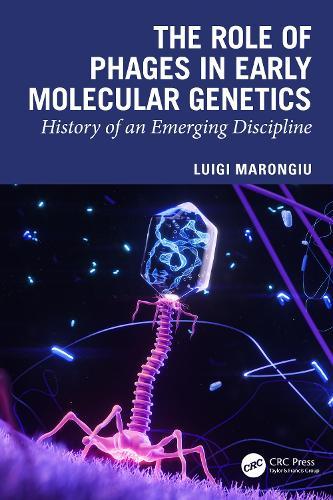Overview
In the shadow of global conflicts—from World War II through the tensions of the Cold War—an extraordinary scientific revolution was quietly unfolding. A brilliant collective of geneticists and microbiologists, known as the Phage Group, harnessed the power of bacterial viruses to unlock the very structure of genes, giving birth to Molecular Biology as we know it today. As antimicrobial resistance threatens global health, phages have reemerged as critical subjects of scientific inquiry, yet their pivotal role in the genetic discoveries of the 1940s–1960s remains largely overlooked—until now. The Role of Phages in Early Molecular Genetics: History of an Emerging Discipline bridges history, physics, and virology, offering both scientists and general readers a compelling narrative of how these microscopic entities revolutionized our understanding of life itself. Key Features: Explains how bacterial viruses became the unexpected heroes in humanity’s quest to understand the genetic code Discusses the forgotten historical and social forces—Lysenkoism, Spencerism, and McCarthyism—that shaped scientific progress yet vanished from our collective memory Provides a fascinating parallel between the emergence of phage biology and quantum physics, two revolutionary fields developing in tandem By illuminating the shared patterns of scientific discovery across disciplines, The Role of Phages in Early Molecular Genetics: History of an Emerging Discipline provides a timely reminder of how breakthrough knowledge emerges—and why the Phage Group’s legacy deserves its rightful place in scientific history.
Full Product Details
Author: Luigi Marongiu
Publisher: Taylor & Francis Ltd
Imprint: CRC Press
ISBN: 9781041109877
ISBN 10: 1041109873
Pages: 240
Publication Date: 02 December 2025
Audience:
College/higher education
,
Professional and scholarly
,
Tertiary & Higher Education
,
Professional & Vocational
Format: Hardback
Publisher's Status: Forthcoming
Availability: Not yet available

This item is yet to be released. You can pre-order this item and we will dispatch it to you upon its release.
Author Information
Dr. Luigi Marongiu studied Molecular Biology at the University of Roma Tre, Italy, and obtained a PhD in Virology at the University College London, England. He studied viral infections at the Universities of Cambridge, Edinburgh, Heidelberg, and Tübingen. Currently, he is leading the Nutritional Virology Unit within the Department of Nutritional Biochemistry at the University of Hohenheim, Germany, where he is investigating the role of nutrition in altering the biology of bacteriophages and its effect on human health. He is the author of the manual Machine learning analysis of qPCR data using R.



